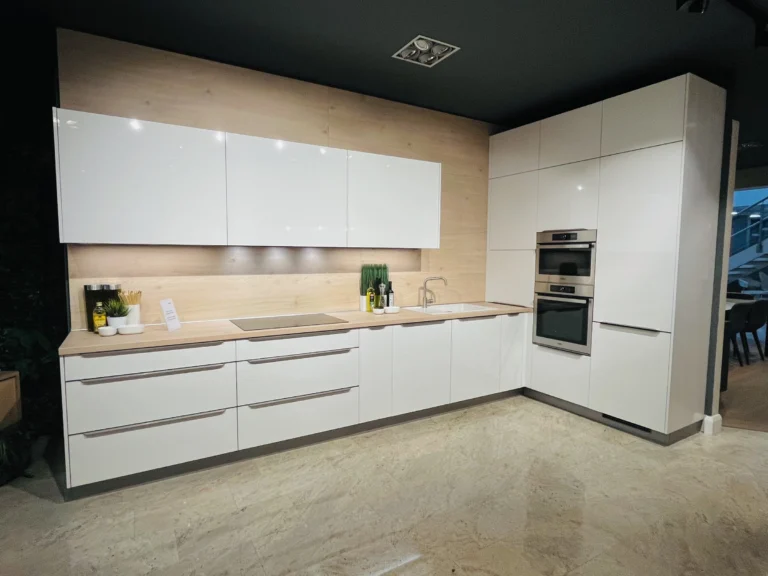Freshly painted walls and a brand-new kitchen sound like a perfect pairing — but which should come first? It’s a question that catches many homeowners off guard during a renovation, and the answer isn’t always obvious.
The timing can influence how smooth the installation goes, how polished the final result looks, and even whether you’ll be doing unnecessary extra work. At Kube Interiors, we approach this decision the same way we do every step of a renovation — by weighing up the practical details alongside the look you’re aiming for, so your kitchens project is as functional as it is beautiful.
Why the Timing Matters
Your kitchen is one of the most frequently used rooms in the house. Walls are often partially covered by cabinets, splashbacks, and appliances, but they still need a professional, durable finish. The sequence of painting and installation matters because:
- It affects the smoothness and quality of the finish
- It can reduce the risk of damage to new surfaces
- It determines how easy it is to touch up or change colours later
Painting Before Kitchen Installation
Painting before the kitchen goes in is a common choice, especially for homeowners who want a neat, uninterrupted paint job behind every cabinet.
Advantages:
- Easy access to all walls without working around cabinets and appliances
- No risk of paint splatter on brand-new cabinets or worktops
- Faster for painters since they’re not cutting in around fittings
Drawbacks:
- Parts of the wall you paint will be covered permanently, which can feel like wasted effort
- Some areas may need touching up after installation due to scuffs or minor wall adjustments
- If your kitchen design changes slightly during fitting, you may have to repaint sections anyway
Painting After Kitchen Installation
Painting once the kitchen is in place is another approach, and one many installers prefer for certain projects.
Advantages:
- You only paint the visible areas, saving time and materials
- Colour choice can be finalised once you see the cabinetry and worktops in the space
- Any marks or adjustments from installation are covered by the fresh paint
Drawbacks:
- Requires careful masking and protection to avoid getting paint on new surfaces
- Painters have to work around cabinets, splashbacks, and appliances, which can be slower
- Limited access to certain corners and edges, which can affect finish quality if rushed
The Kube Interiors Recommendation
In most cases, we recommend a two-stage approach — paint first for coverage, then touch up after installation.
Our process typically looks like this:
- Base Painting Before Installation – Apply primer and one coat of colour to all walls before the kitchen goes in. This ensures good coverage and protection behind cabinets.
- Kitchen Installation – Fit cabinets, worktops, and splashbacks without worrying about splatter or overspray.
- Final Painting and Touch-Ups – Apply the final coat after the kitchen is in place to cover any marks, ensure crisp edges, and make the visible walls perfect.
This method combines the best of both worlds — giving you a clean, even finish and eliminating the need for unnecessary repainting.
Factors to Consider in Your Decision
Every kitchen renovation is unique, so here are a few things that can influence the best choice for you:
- Timeline – If your painter and fitter are on tight schedules, it may make sense to paint before installation for efficiency.
- Cabinet Style – If you have open shelving or glass-front cabinets, the walls behind them will remain visible, so a full paint job beforehand is important.
- Wall Condition – If walls need plastering or repairs, it’s easier to complete them before cabinetry is in place.
- Colour Confidence – If you’re unsure about your wall colour until you see the cabinetry, painting after might be the safer choice.
Keeping Your Kitchen Perfect During the Process
Whichever route you choose, protecting your new or existing finishes is key. Use high-quality masking tape, dust sheets, and edge guards. If painting after installation, take extra care around joins, trims, and splashbacks to keep lines clean.
Your Kitchen, Your Finish
There’s no one-size-fits-all answer to whether you should paint or install your kitchen first — but there is a process that will give you the best of both worlds. By painting the base coat before installation and touching up after, you can ensure your kitchens look flawless now and for years to come.
At Kube Interiors, we don’t just focus on fitting cabinets; we look at the whole picture. From the first design meeting to the last brushstroke, we guide you through each step so your kitchen renovation in Ireland feels smooth, stress-free, and deeply rewarding.


